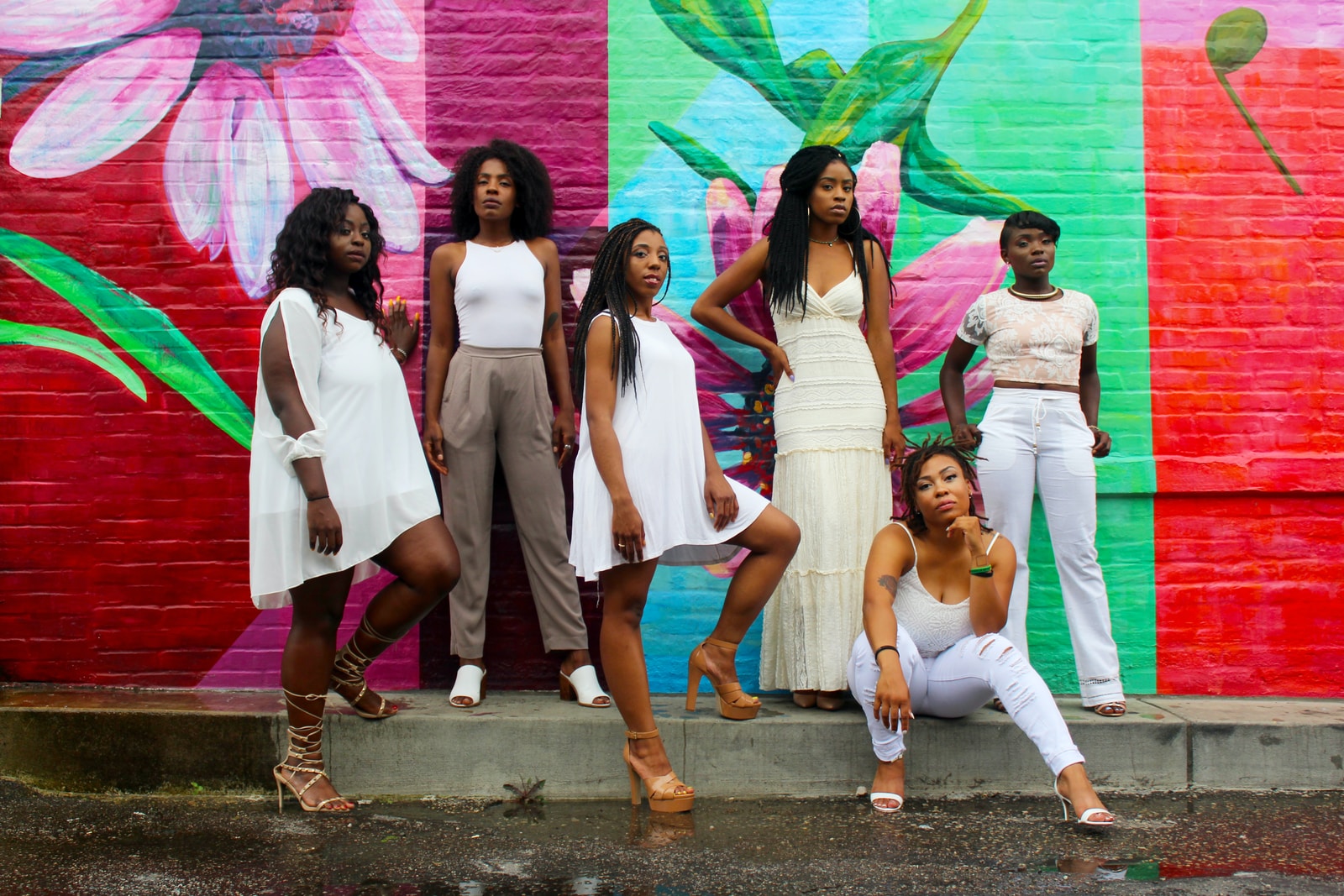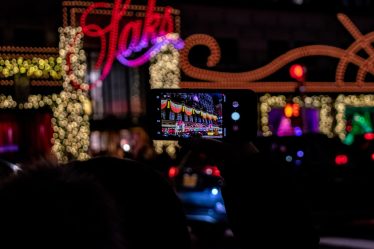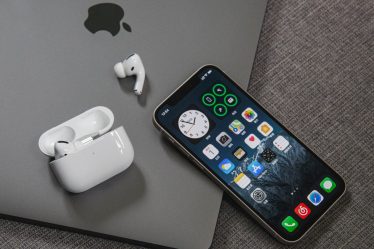
Many in the fashion industry showed solidarity with protestors and Black Lives Matter by supporting them in various ways. While monetary donations, public statements and promises to do better are all important, they don’t address the industry’s systemic racism. Fashion is a closed industry, based on exclusivity. It starts with the designers and ends with those who can afford them. How can it be inclusive if fashion doesn’t change?
Fashion has historically and contemporaneously prioritized white and privileged voices. It has kept Black creatives out the top jobs while profiting from Black culture. The instances of cultural appropriation from even the last five years are too many to list in full, but they include a 2015 Valentino “Africa-inspired” fashion show, a 2016 Marc Jacobs show that had white models in dreadlocks, and February’s Comme des Garcons show that sent out white models in cornrowed, lace front wigs. The list of offensive campaigns and products of the last few years is even longer: Prada’s anti-Black figurines, Gucci’s blackface sweater, Burberry’s noose hoodie, etc.
It continues, despite industry’s recent antiracist pledges. Just a month after countless messages had been posted in support for the Black Lives Matter movement’s cause, Marni, an Italian luxury label, was found apologizing for its “Jungle Mood” campaign that featured Black models wearing chains on their feet. Soon after, H&M suspended employees over the use of a racist slur regarding the name of a hat made by its sister brand Other Stories.
Every time a new offensive campaign or product is introduced, everyone asks the same question: “Why didn’t anybody stop this?”
These are often instances of racism that were not recognized by those in decision-making positions. While this doesn’t excuse white people who don’t understand racism, it does show that racism continues when people of color aren’t appointed to leadership positions or seated at the table when decisions have been made. Many designers have made promises to improve their work over the past few months by creating diversity and inclusion departments, initiatives, and vowing to recruit more BIPOC employees to their brands. However, many designers have noted that real change cannot be achieved if the top executives and other high-ranking figures remain white. But this doesn’t mean that it won’t happen in other parts of the industry.
Many fashion professionals are determined to address the issue head-on. In June, Teen Vogue Editor-in-Chief Lindsay Peoples Wagner and PR executive Sandrine Charles announced the Black in Fashion Council – a collective made up of over 400 creatives, editors, executives, models, stylists, and more – with a mission to hold brands accountable and advance Black talents to all levels of the entire fashion industry.
Fashion brands are not the only ones facing a reckoning. Media companies that cover said labels – ranging from Conde Nast (which owns Vogue, among other titles) to Man Repeller and Refinery29 – have also been called out for their mistreatment of Black employees. In June, following former and current Refinery29 staffers sharing their experiences of racism at the company, former editor-in-chief and co-founder Christene Barberich resigned. The editorial association, The union that I am a member of stood with all those who came forward, demanding accountability from management. This included requests for diversity in leadership roles and anti-racism training. Vice Media Group, the parent company of R29, has since hired independent investigators to look into the allegations, initiated a pay equity analysis, a training program and developed a Diversity, Equity and Inclusion strategy.
In August, the Black in Fashion Council launched with 38 partners ranging from Tommy Hilfiger, TheRealReal, and Prabal Gurung to Conde Nast and Glossier. (Recently, the latter apologized after racism allegations came to light.) Charles and Peoples Wagner are creating an equality score, similar to the Corporate Equality Index for LGBTQ communities. This will provide an inclusive benchmark. They will track the support that Black employees receive from companies that have signed a three year commitment pledge. “Any brand can make a $1 million pledge to the N.A.A.C.P. on Instagram, but who will follow up and check that they did it?” Peoples Wagner told the New York Times. She is correct: Brands can make claims about being anti-racist, and produce diverse imagery and campaigns. But is this all just a façade?
Take, for example, the Marni campaign that, while featuring Black models and shot by photographer Edgar Azevedo, went horribly wrong after the images were retouched post-shoot without the photographer’s approval. Fashion brands that have Black models on the runway, but all-white makeup and hair artists backstage, even those who are often not trained to work with darker skin tones or hair colors. Fashion can address this. One, ensure that creative and boardroom staff are staffed with people who reflect the diversity of the images they send out to the world.
Despite the fact that there are not many Black fashion creatives serving as leaders, many people point out signs of progress. Many of today’s most prominent fashion designer are Black, and they are making history. Off-White’s Virgil Abloh was appointed Louis Vuitton’s first African American artistic director in 2018. 2019 saw Rihanna become the first Black woman to lead a luxury fashion house at LVMH. The NYFW show was one of the most exciting and interesting in recent history. The same year, Christopher John Rogers won the CFDA/Vogue Fashion Fund, a year after Kerby Jean-Raymond of Pyer Moss won the same prize. This year, Telfar Clemens’ label’s shopping bag was crowned the It Bag of our generation by The Cut, just months before the designer would go on to be nominated for the 2020 CFDA Accessories Designer of the Year fashion award (last year, he lost the award to The Row’s Mary-Kate and Ashley Olsen). And then there was Zendaya’s InStyle shoot for the September issue, for which her stylist Law Roach pulled all-Black designer looks – nothing less than a showcase of the incredible talent working right now.
The Council of Fashion Designers of America, an organization that promotes American designers, is also something to be positive about. It welcomed Carly Cushnie, a Black fashion and bridal designer, and Maria Cornejo, a sustainable, Chilean-born designer, to its board a year ago. “I’m rearranging the board so that it is more diverse in age and more diverse in every way,” CFDA chairman, Tom Ford, told WWD at the time. “Lots and lots of people expressed concern that the board and the CFDA were not sufficiently diverse.”
Following the onset of the recent protests, the CFDA released a statement with its plan of action. These initiatives are intended to create systemic change in our industry. They include placing Black talent across all fashion sectors, creating mentorship programs and internship programs that focus on students and recent graduates, diversity and inclusion training programs, and financial contributions to Campaign Zero and the NAACP. (The CFDA with Vogue also awarded $1 million to ICON 360 to aid POC fashion businesses impacted by COVID-19 later in the month.
Although the initiatives may seem to make a significant impact on fashion, those with intimate knowledge of the industry say they are not enough. Soon after the CFDA’s statement was released, the Kelly Initiative – led by writer Kibwe Chase-Marshall, editor Jason Campbell, and creative director Henrietta Gallina – sent a letter to the organization. It was signed by 250 Black fashion workers, including Victor Glemaud (designer) and Romeo Hunte (stylist), and called upon the CFDA’s anti-racism efforts. It stated that the CFDA was not up to par with the culture’s fast-solidifying zero-tolerance policy on Anti-Blackness. “Amidst these realities – in additional to those of a Pandemic’s disproportionately high toll within Black Communities and amplified visibility on law enforcement’s disregard of the value of Black lives -we remain unfettered to the pursuit of our seat in the table.” The statement ended with a four-point initiative that called for manager bias mitigation training and meritocratic hiring practices. It also recommended data disclosure and support for Black professionals.
“The 2020 CFDA Fashion Awards nominees were announced by the organization in July. Although names such as Kenneth Nicholson, Christopher John Rogers and Telfar Clemens were on the list, most of the nominees were established veterans, many of whom are white. Tom Ford, who was awarded the ceremony’s Lifetime Achievement Award in 2014. He is also currently chairman of the CFDA and has won six awards in the past. This year, he is up for two nominations. Marc Jacobs and Thom Browne are also included in this list. Ashley Olsen and The Row’s Mary Kate and Ashley Olsen, all of whom, while being incredible designers, have won many CFDA awards. I am not saying that there aren’t some innovative, disruptive designers among the many recidivist recipients. You can count them all on one hand, which makes them feel more like a token addition than a shift,” Vanessa Friedman wrote to the New York Times. Although we are yet to see the next steps, the organization recently appointed CaSandra Diggers president. This makes her the first Black woman to be the CFDA’s president since 1962 when it was established. It also announced “strategic shifts” to increase opportunities for Black fashion talent.
Retail is another sector of fashion that has been subject to implicitly racist practices. Aurora James, Brother Vellies founder, launched her 15 percent Pledge in May. It asked retailers to pledge to buy 15% of their products from Black-owned businesses. “Many of your businesses were built on Black purchasing power. Many of your stores were established in Black communities. So many of your sponsored posts have been seen on Black feeds,” James said in an Instagram post. “This is all you can do to help us. We represent 15% of the population, and we must represent 15% of your shelf space.” Many people love this pledge for its straightforward approach to solving a problem that has been long considered complex. Real change can be achieved when retailers commit to investing in Black designers in an effective way. Companies ranging from West Elm and Sephora to Rent the Runway and Vogue have joined the pledge since its inception.
What if the pledge wasn’t made by only fashion companies to financially empower Black entrepreneurs? The power of the consumer is also to make a difference in the industry. Beyonce’s stylist Zerina akers created Black Owned Everything in June. It was a platform that showcases Black-owned businesses. The Instagram bio of the account reads “For When the Trend Is Over”. This is because, although companies are making statements and making donations now, it will only take time to see if they truly care about equality and inclusion over time. Are they going to continue to work for sustainable industry change once “the trend” has ended? Although no one can answer that question, it is clear that if brands make promises or release statements promising change there will be people, including Aurora James, Black Fashion Council and fashion-lovers, who will hold them responsible.
Carly Cushnie, in an interview with Bloomberg Business, stated that fashion-oriented “companies should be hiring Black executives to make real change. Big corporate companies should be establishing education programs, scholarship opportunities, internships specifically for Black people so that Black people can get the support, the knowledge that they need to enter these industries.” (In August, Cushnie, along with other retail and fashion executives, launched RaiseFashion, an organization that will provide mentorship programs for Black-owned brands and industry professionals.)
Space is also a requirement for companies. “I believe that if people in power (especially white people) really want to make the world a better place, they have to say, Okay, I have got to take a hit’ or I have to let other people in spaces and have access’,” Christopher John Rogers said recently in Vanity Fair. “If we expect Black excellence, then we cannot accept white mediocrity.”
It’s time for fashion to take a look in the mirror and start making changes within its corporate structure. This includes hiring more people of color at all levels but particularly in decision-making, creative and leadership positions, as well as committing to support Black talent financially through scholarships and grants.
What if it doesn’t? It’s difficult to see a future for an industry so stuck in the past.





